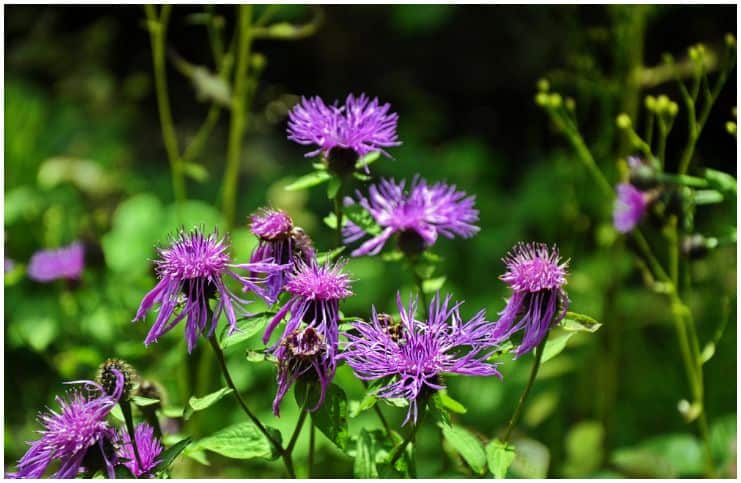Cornflower (Centaurea Cyanus) – Facts, Medicinal Uses, Health Benefits:
Facts
Cornflower is also known as Centaurea cyanus, bluebottle, bachelor’s button, boutonniere flower, hurtsickle, or cyani flower.
It is native to Turkey and Greece and has a long history of healing use.
It is an annual flowering plant in the family Asteraceae, commonly found as a weed in crops of wheat and rye, sometimes on the side of the roads in the hill and plain regions. It is spread throughout countries that grow wheat and rye.
Chemical composition
Flowers contain polyenes, anthocyanidins, K, and Mg salts.
The flowers of this medicinal herb are also a good source of a bitter compound known as pectin.
Health benefits and uses of Cornflower (Centaurea Cyanus)
Flowers have phytotherapeutic importance in human and veterinary medicine. Their active principles have a diuretic, anti-diarrhea, anti-inflammatory (especially in ophthalmology), and calming role.
For internal use, they are recommended for diarrhea, dyspepsia, kidney and bladder disorders and for external use – eye irritation.
The leaves or seed ingested wine, is very effective against the plague, and all infectious diseases, and is very useful in pestilential fevers.
Harvest
The flowers are harvested in July-August, in dry weather. Drying is done in the sun or in tin-roofed attics, in a thin layer.
Artificial drying should be done up to 35 °C. Brown flowers are to be removed. Keep in textile or paper bags.
Internal use
1.Treatment of kidney and liver diseases, as a diuretic:
a) infusion: one teaspoon of dried flowers and a cup (200ml) of boiling water. Leave it covered for 15 minutes and then decant. Drink it warm, divided into 3 doses, half an hour before meals. For the immune-enhancing effects, drink 3 times per day for no longer than twenty days.
b) maceration: one teaspoon of dried flowers in a glass of wine or beer. Keep it covered for 24 hours and then decant. Drink it 30 minutes before eating in divided doses.
2.Treatment of diarrhea, kidney, and bladder diseases:
Infusion of ½ or 2 teaspoons chopped, dried flowers, and a cup (250 ml) of boiling water. Leave it covered for 15-20 minutes and then decant. Drink a quarter cup 20 minutes before main meals; to increase diuresis, drink two cups a day.
People take cornflower tea to treat fever, constipation, water retention, and chest congestion. They also take it as a tonic, bitter, and liver and gallbladder stimulant. Women take it for menstrual disorders and vaginal yeast infections.
Note
For the immune-boosting effects, drink three times a day for no longer than two to three weeks.
External use
Calming effect for eye diseases: Infusion of 1 and a ½ teaspoons of flowers and a cup of boiling water. Apply compresses or cataplasms on the eyes.
Infusion therapy with bluebottles as compresses is also recommended for eyelids wrinkles and tired or irritated eyes.
Due to their soothing and toning effects, cornflower treatments are recommended for facial muscles and wrinkles, applied on the skin as compresses (one tablespoon of flowers and two cups of water).
Masks from this flower have regenerating effects on the skin, as it becomes softer and brighter.
READ THIS NEXT:
Sambucus Ebulus (Dwarf Elder) – Side Effects, Medicinal Uses, Benefits
Jiaogulan Tea (Southern Ginseng) – Side Effects, Facts, Uses, Health Benefits
Pickled Mustard Seeds (Black, Brown, Yellow) – Side Effects, Nutrition Facts, Health Benefits
Hazel (Corylus Avellana) – Facts, Health Benefits, Medicinal Uses
References https://www.researchgate.net/publication/244498839_Phytochemical https://www.ncbi.nlm.nih.gov/pubmed/29787846
